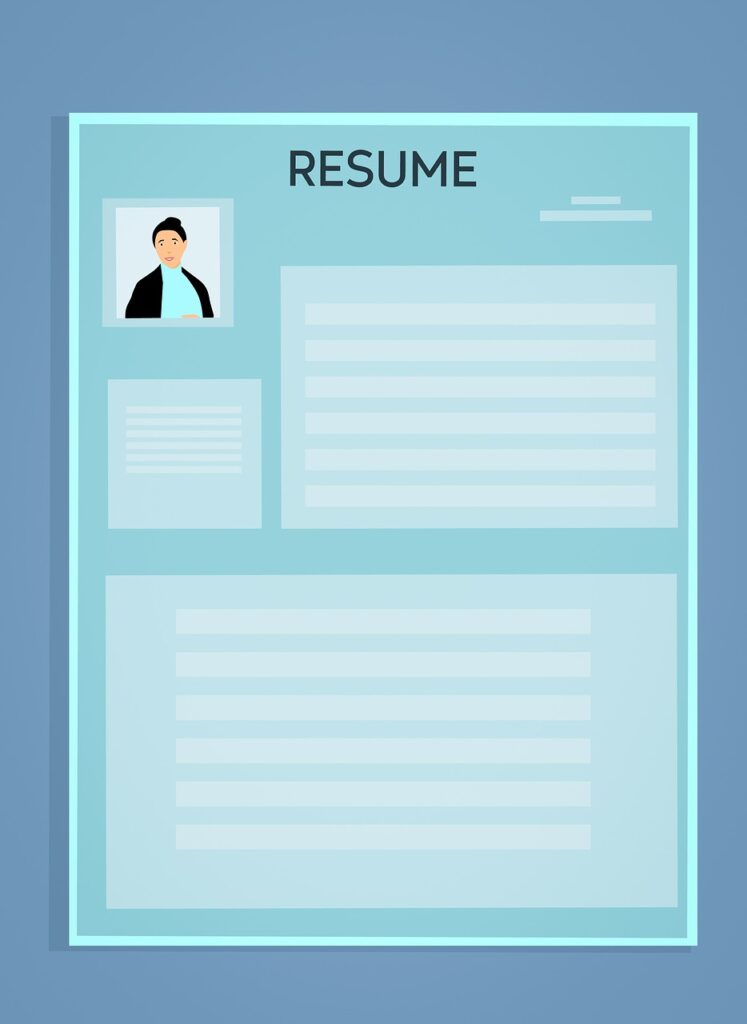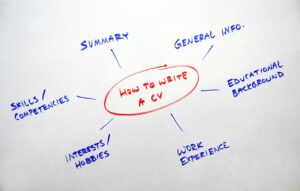Recently I’ve been talking to several people who are just starting to put out feelers for a new job. Some people haven’t updated their resume in a couple of years, others for decades. Now, a good resume writer can be a great way to get your resume up-to-date, but the DIYer in me says you can do it yourself. Here are some pointers on drafting up your new resume:
Make it easy on the eyes: First, I think using a free resume template is smart. Canva.com has some great, free templates you can use. Some people have also found good templates on Etsy.
Make your resume get noticed: Using a template with some color-blocking or splashes of color is my advice. Nothing brightens my day like a smart, well-written resume with some good subject headers and some color, any color. Please!
How do I reach you? Yes, put your contact information at the top of your resume. Name, phone number, email and your city and state of residence is what I want. I recommend not putting down your home address. Let’s keep some personal information private, for your safety.
Quickly, who are you? For most people with some industry experience, put a professional summary section at the top of your resume. It doesn’t need to be long, but putting your career highlights in there is smart. I like seeing numbers. Percentages of revenue increases, number of new customers brought in, total increases in revenues you were responsible for. Now, not every job has a lot of numbers, so use information that is important to your role. Quality improvements in winemaking, new efficiencies in your administrative management, reduction in staff turnover, new software implementations, etc., are all good things to put in there.
Education or Work Experience: I think if you’ve been working in progressively more advanced roles for about the last 10 years, start with work experience. List Title, Company, Dates of Employment, and City or State you worked in. Now, there are a lot of companies out there, even lots of wineries in wine country. Don’t expect someone to know the company you are working at. Put a short blurb underneath this info that summarizes what the company is. I like it in italics underneath. Something like this shameless plug works: WineTalent is an executive recruitment company that focuses on individualized searches in the wine industry.
Give me bullet points! Within your work experience, call out the main functions of your job. This can include similar items as I mentioned in the Professional Summary, but keep it unique to each section, not copied from another area on your resume. List major responsibilities. For sales positions, I like to see key customer relationships, key accounts, and related information. For hospitality positions I’d list information such as how the tasting experience is conducted, how you grew your wine club or how many staff you managed. For winemaking positions list your involvement in the vineyard, your responsibilities in the cellar and in winemaking decisions and your involvement in customer/trade engagement.
Logos? I like it when people use company logos on their resume in the experience section. A nice, easily identifiable logo goes a long way, so use it to your advantage in your resume. But make it look right. One company logo in a list of several different companies doesn’t work. Too many logos and it starts to get busy. But think about using them if it looks right.
Can you list your education now? If you are a fairly recent graduate, highlight your education above your experience. Or if you are a newly minted MBA, scream that at the top of your resume. But if your work experience has eclipsed your education, list education information afterwards. You need to make the judgment call here, but those are my words of advice.
Do you have hobbies outside of work? I may be old fashioned, but I like seeing some interesting facts at the bottom of the resume. It lets me see you a bit more multifaceted. Be smart, think about what you are putting down.
Keep it to one page! I know, I know, you are so much more than one page! But I can have a 22 year old recent graduate and current Barista with a three page resume and an industry veteran with 30 years of work experience who has a one page resume. You really can be concise and wow me with your experience and do it all on one page. Please! But if it doesn’t feel right, make it two pages. Stick to two pages or less.
Avoid Errors: Have someone check your spelling, grammar and details. I have had to throw out too many resumes of candidates that can’t spell, have terrible grammar or odd dates of employment. Don’t end up in my circular file. Check your work, have someone else check it over, and maybe another person too, just for good measure.
Check for formatting issues: Not only do resumes end up getting tossed for errors, formatting issues can cause you headaches too. Some headers don’t show up on programs, meaning your name and contact info is invisible, and in turn, you are invisible. Send your file to some friends and make sure it looks okay on their computers. And read this article about how to format your resume best for applicant tracking systems.
Now get to work and write your resume! I know this is a good DIY project for you.







